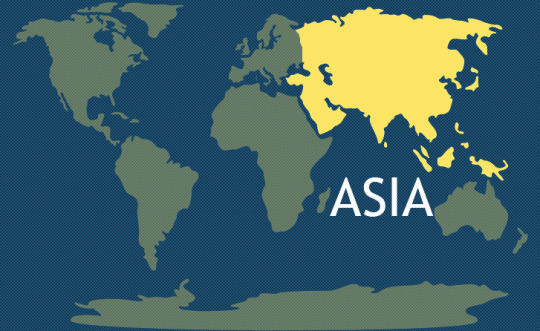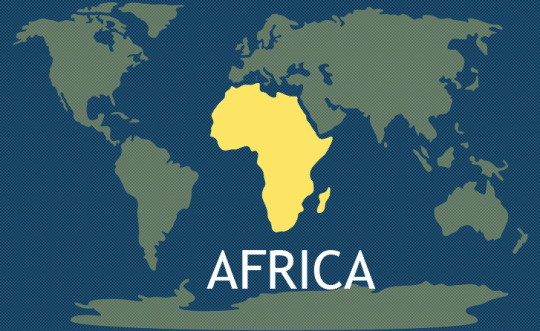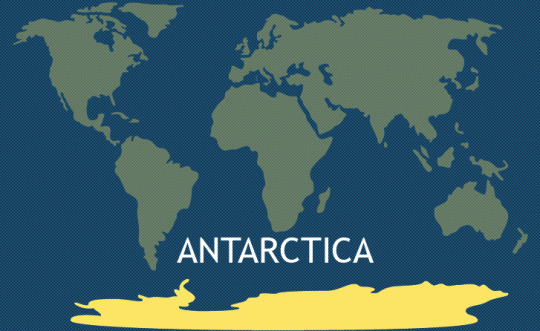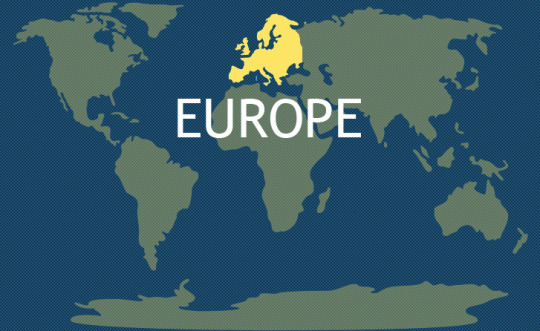#but that’s divided by 7.5 billion (an approximation of the human population at the time of this post being originally made)
Explore tagged Tumblr posts
Text

“average person eats 3 spiders a year” factoid actualy just statistical error. average person eats 0 spiders per year. Spiders Georg, who lives in cave & eats over 10,000 each day, is an outlier adn should not have been counted
#so i did the math#technically the average would still be really close to 0#if he ate 10000 spiders a day for 365 days#that would be 3650000 spiders#but that’s divided by 7.5 billion (an approximation of the human population at the time of this post being originally made)#so that’s like#very low number#nowhere near 3#still meaning the average human wouldn’t have eaten any spiders ever#but please let me know if my calculations are wrong! /gen
936K notes
·
View notes
Text
Tensions in Media Representation
(~1,100 words, 4m)
Summary: How representative or diverse media is depends a lot on which and how many categories we use to define what it is representative of. Since almost no media can be perfectly representative, we should quantify the psychological effects of representation to determine what tradeoffs we should be willing to make.
I see I've picked up some new blog followers from the recent post. Let's do a 101.
Diversity & Categories
The nature of diversity is that it is almost limitless. Out in the world there are over seven billion unique human beings, but that means that there are far more than seven billion ways to categorize them.
We can start with a binary - split the population into everyone over 5'10" and everyone under that height. Then we can make our categories more specific, or 'granular'. Perhaps we could break everyone on Earth into 84 categories, one for each inch. Or we could use maybe 280 centimeters, or even 2,800 milimeters, if that isn't specific enough.
Unless a representative body or artistic work contains all approximately 7.5 billion human beings on Earth in equal measure, we can always call for it to be made more diverse by increasing our number of categories for people - or less diverse by reducing our number of categories. This reflects a natural tension in the concept of representation.
Hollywood
Consider a movie. A major purpose given for representation is a sense of inclusion, and thus people seem to focus on inclusion in large, popular movies, rather than niche movies that cater to specific demographics. (Another reason given is not just to feel inclusion, but to promote it.)
Each character needs to spend time on screen to act, recite dialogue, and so on. Every time we add a new major character, we have to either reduce the screen time for the other characters or else make the movie itself longer. Obviously, there's a limit to how long people will be willing to watch a movie. The upper limit would be a hypothetical 3-hour Twitter movie in which every thirty seconds a new character reads a tweet, for a cast of 360.
I think we can all agree that "360 Tweets" would be terrible movie. In practical terms, we'd usually prefer a main cast of somewhere between 5-12 characters, and the latter might be stretching it if we aren't making a heist movie.
Category Aggregation
China, Korea, and Japan are entire countries with unique cultures, languages, histories, and internal ethnic groups. Political animosity in the region lingers to this day, in part stoked by the government of China. In the American racial system, however, there is only one broad category for all of East Asia ("asian," which also includes people from countries in Southeast Asia such as Vietnam or the Philippines), so that someone whose ancestors are from China might protest an exhibit where white Americans can try on Japanese kimono, as "cultural appropriation," while native Japanese visitors look on in surprise. (It seems the traditional kimono industry itself might be in financial trouble, but if they are looking for relief overseas in the English-speaking world, they may not find it.)
There are, of course, reasons for this. For instance, many Americans would be unable to tell Han Chinese from Yamato Japanese by sight or by language, and there are Americans of mixed asian ancestry or of asian ancestry who have never so much as visited Japan or China. To the degree that race is a social phenomenon that's enforced on us from the outside, it might make sense to view "asian American" as a "race."
This works out well for our Hollywood movie. By compressing all of Asia into "asian," all of Africa into "black," and much of South and Central America into "hispanic," "indigenous," or "white," we can get an actor from each major group well within the cast size for our heist movie. In fact, it helps us with casting in other ways - a Korean woman might play a Japanese character without Americans noticing, much as we might have a Swede play a Dane.
Intersectional Overloading
Suppose it isn't just race. There's more to representation (and lived experience) than skintone - which means we have more ground to cover. How do we fit it all the necessary representation into just 12 characters? Simple - we aim for each character to count as multiple categories of representation: black and trans, gay and hispanic, disabled and immigrant, religious minority and mentally ill, etc.
However, the more overloaded with specific category memberships, the more improbable a character becomes. This may lead to the characters becoming less representative. While I can promise you that someone who is both trans and hispanic must exist somewhere in America, the typical experience of "being hispanic" is not "being trans and hispanic."
Category Separation
It's often implied that lack of representation is psychologically hazardous, but just how dangerous is it? If representation must be both highly detailed and highly present in order for people to thrive, it might be necessary to abolish the blockbuster movie and divide up the major media market into a number of smaller niche markets, then prevent anyone from buying media that is insufficiently representative of themselves.
Large firms such as Disney could use motion capture technology and CGI to quickly adapt to each cultural context from a 'core' film, changing the architecture, props, and certain characteristics of the characters. They would also need to do more research into cultural communities. In practice this would mean more expense (due to more work to create the additional assets) while the size of the total audience (and the money they pay) remains the same. Plots would become more abstract or simplified as details need to be changed for each market. Fewer movies would be profitable, and therefore fewer movies would be made. (After all, if a firm continuously makes unprofitable movies, it will eventually go out of business and stop making movies altogether.)
Subjects for Research
Fortunately, the effects of lack of media representation are probably not serious enough for anything nearly so dramatic as that. But if media representation actually is psychologically necessary, then the questions of just how much and what kind of diversity are needed are not just questions for activists and philosophers.
The more diversity and representation are required, the higher the costs (fewer media, smaller audiences, more work in production required, overhead from institutional intervention, etc). There are trade-offs, and discovering just what those trade-offs are - just how much effect detail in diversity representation has, the effect on price (and thus availability) of media, whether increasing shared experiences can increase perceived representation, and how much psychological impact media representation has in general (especially as compared to other interventions) - could prove a fruitful area for research.
If the purpose of diversity and representation in media is psychological health, then we also owe it to our communities to test what kinds of representation are actually effective at achieving this - even if the search makes us uncomfortable.
14 notes
·
View notes
Link

7 Continents of the World and their Countries
The continents are the large tracts of land that we can see on our planet. They are inhabited by terrestrial organisms, such as human beings, chimpanzees or lions. We have small lands, known as islands, where existence is also possible, but which alone could not form a continent. There are 7 continents on the planet, although many people combine Asia and Europe into one, known as Eurasia. On the other hand, others decide to combine North America with South America, creating the American continent.
In general, the recognized continents are Africa, Antarctica, Asia, Australia, Europe, North America and South America.
CONTINENT AREA (KM) POPULATION MOST POPULOUS CITY Asia 43,820,000 20,185,064 Shanghai, China Africa 30,370,000 1,002,234,000 Lagos, Nigeria Antarctica 13,720,000 4,490 McMurdo Station, US Australia 3,478,200 29,127,000 Sydney, Australia Europe 3,390,000 738,199,000 Moscow, Russia North America 9,460,000 542,056,000 Mexico City, Mexico South America 6,890,000 392,555,000 Sao Paulo, Brazil
Asia

Asia is a continent bounded by the border of Europe, containing part of Russia in its interior
Asia is the largest continent and contains the largest population, approximately 4.3 billion people. This is why it is an important part of the world economy. It is located in the northern and eastern hemispheres, occupying 30% of the total land area. It is also known for its dense settlements and for containing large overpopulated regions.
It contains 60% of the population of the planet, an amazing fact if we compare it with the rest of the continents.
The boundaries of this continent are not established exactly so the separation between Europe and Asia is quite diffuse. Hence, many people call both continents Eurasia, considering them one. In the eastern part, Asia is bathed by the Pacific Ocean, on the south by the Indian Ocean and on the north by the Arctic Ocean. The continent is known to have a wide variety in terms of culture, environments, ethnic groups, its economic and historical past and its systems of government.
Africa

The African continent has a large number of inhabitants, with ages less than nineteen
Africa is the second largest continent in the world, being also the second with the largest population. It is made up of 54 countries that make up the home of more than one billion people. Approximately 15% of the world's population lives on this continent. Africa is located in the center of the Earth so that Ecuador passes through its center. It is the only continent that extends from the north, with colder temperatures, towards the south, with more temperate zones, although in general, its climate is tropical. According to the historians in this continent, the birth of the human species is located, since the oldest fossils were found in it. At present, many different species live on their land. On the north, it is bathed by the Mediterranean Sea, on the southeast by the Indian Ocean, on the northeast by the Suez Canal and the Red Sea, and on the west by the Atlantic Ocean. The African population is the youngest in the world, perhaps due to the shortest life expectancy, to contract diseases, due to the continuous wars and the nonexistent birth control. Approximately 50% of its residents are under 19 years of age.
Antarctica

The continent of Antarctica is a very cold climate and sex that allows the survival of species very different from other places
Antarctica is the continent that is located to the south, located on it the South Pole land and consisting mostly of permanent glaciers. It is one of the places on the planet where life is more complicated. Therefore, it has a very small population, less than 5,000 residents, being the continent with the smallest number of inhabitants.
Approximately 98% of its surface is covered by ice of a thickness of 1.9 kilometers.
It is the fifth largest continent, having twice the size of Australia. It is known for having a dry, cold climate and being the windiest. It contains the highest elevation of the seven continents, reaching -89 degrees of temperature. This hostile environment causes few organisms to survive and there are few resources, so for a long time remained unexplored.
Australia

Representation of the Australian continent on a map with its different cities and deserts
The Australian continent is the smallest of the seven, being called by some as the continent island. It is surrounded by the Indian Ocean and the Pacific Ocean is very rich in biodiversity and ecosystems. It is composed of a large number of islands, highlighting the island of Tasmania. Among the closest neighboring countries, we find Indonesia, the Solomon Islands, New Zealand or New Guinea.
It contains the Great Barrier Reef, the world's largest reef, which extends up to 2,000 kilometers northeast of the Australian coast and, the largest monolith on Earth, Mount Augustus.
Before British settlers arrived, Australia was inhabited by Indians, for approximately 40,000 years, so it counted on 250 different language groups. Today, it is considered one of the richest countries in the world, as well as one of the most developed. In addition, it is classified as one of the main countries in terms of quality of life, education, health, economic freedom, and also in the protection of political rights and freedoms.
Europe

Classification of the European Union with the different flags of each country
Europe is the second smallest continent in the world. It contains 50 countries and is the third largest population, after Asia and Africa. Russia is the largest European country, accounting for 40% of its surface. Know that this country also has part of its territory on the Asian continent. It is divided from Asia by the basin that divides the Ural Mountains and the Caucasus, the Urals River, the Caspian Sea, the Black Sea and the water courses that connect the Black Sea with the Aegean Sea. Europe is surrounded by the Arctic Ocean in the north, by the Atlantic Ocean in the west and by the Mediterranean Sea in the south and east. The ancient Greece of Europe is known to be the birthplace of Western culture. Since the beginning of the 15th century, it has played a very important role in history, even during the industrial revolution. During the sixteenth and twentieth centuries the countries of Europe were controlled by America, some parts of Africa and Oceania. This is due to the strategic situation between America and the rest of the continents. However, at present, it begins to have a great influence on the rest of the countries and continents.
North America

The North American continent seen from above, in all its extension and surrounded by different oceans
The North American continent resides in the northern part of the hemisphere. It is surrounded by the Arctic Ocean in the north, by the Atlantic Ocean in the east, by the southwest by the Pacific Ocean and by the southeast by the Caribbean Sea. Its population amounts to 565 million people, containing 7.5% of the world's population. Much of the area of this continent is dominated by Canada, the United States of America, Greenland, and Mexico. Although it also contains small states from Central America and the Caribbean regions.
South America

Outline of the most outstanding elements of South America
South America is located in the western hemisphere with much of its surface in the southern part and a small portion in the northern hemisphere. It is surrounded by the Pacific Ocean, on its west side, by the Atlantic Ocean on the north and east side, and by the northwest by the Caribbean Sea. It is considered the fourth largest continent, and the fifth in terms of population. It has great diversity in terms of geography and biodiversity. In Venezuela, there is the highest waterfall in the world, known as El Salto del Ángel. The Amazon River is the largest in the world and the Atacama Desert is also located within this continent. Its biodiversity is characteristic of the place, with unique animal species, such as the anaconda, or the jaguar. Its tropical forests contain the largest proportion of species on the planet. Brazil is the largest country in this continent, occupying more than half of its surface. Most of the population is located on the west and east coasts, while the southern and inland areas have fewer inhabitants. South America was colonized during long periods of history, by the Spanish and Portuguese, helping these languages to expand through these territories until the present time.
2 notes
·
View notes